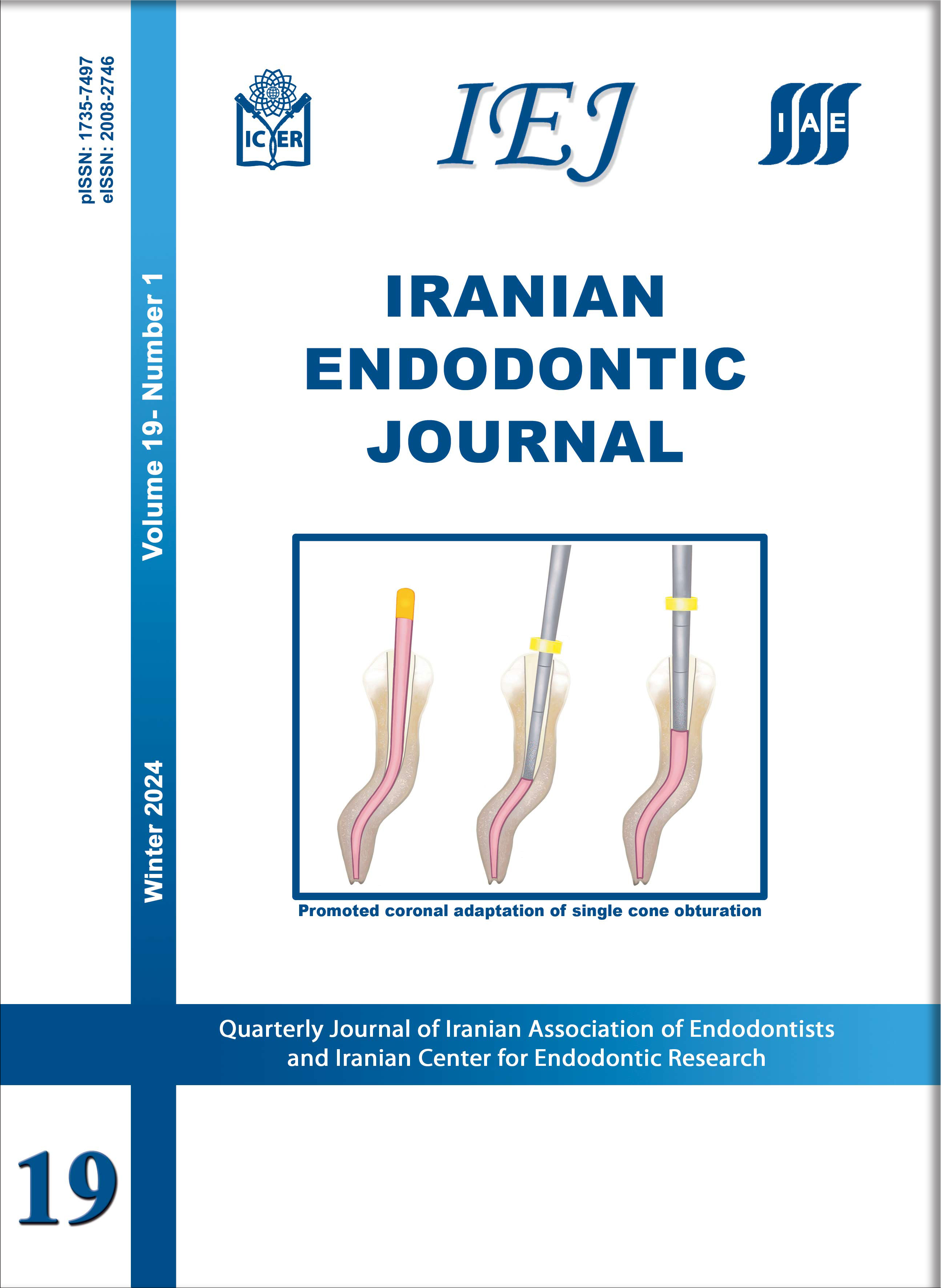In Vitro Scanning Electron Microscopic Study on the Effect of Doxycycline and Vancomycin on Enterococcal Induced Biofilm
Iranian Endodontic Journal,
Vol. 5 No. 2 (2010),
21 June 2010,
Page 53-58
https://doi.org/10.22037/iej.v5i2.1495
INTRODUCTION: Enterococcus (E) faecalis bacteria adhere to dentine of teeth root canals to form the biofilm. E. faecalis has been shown to be resistant to antibiotics. This in vitro study aimed to investigate the efficacy of vancomycin and doxycycline in inhibiting E. faecalis biofilm formation. MATERIALS AND METHODS: A total of 60 extracted human teeth were incubated with E. faecalis (ATCC 35550 strain) for 45 days to allow biofilm formation. The teeth were equally divided into six groups (n=10): 1) positive control, 2) negative control, 3) doxycycline alone 4) doxycycline with filing, 5) vancomycin alone, 6) vancomycin with filing. The relevant canals were irrigated with 4µg/mL of either vancomycin or doxycycline antibiotic. Teeth were processed for scanning electron microscopy (SEM). Areas of biofilm remaining in the canals after antibiotic treatment were measured with Scion image analysis software using the SEM images. RESULTS: Vancomycin is more effective in reducing the overall biofilm area compared with doxycycline; moreover filing after antibiotic administration increased this effect. CONCLUSION: We can conclude that vancomycin had greater efficacy than doxycycline for inhibiting and reducing E. faecalis biofilms growth in root canals. However, it failed to completely eliminate biofilm formation.




